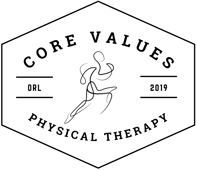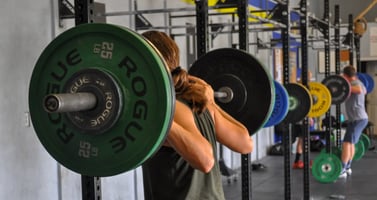While football, basketball, and baseball enjoy considerable popularity in the United States, soccer stands out as the predominant youth sport. The growing number of participants in this physically demanding game, along with a societal fixation on year-round competition, leading to minimal breaks for players and virtually no off-season, has given rise to a concerning trend of soccer-related injuries. Although upper extremity injuries are not unheard of in soccer, the vast majority of injuries occur in the lower extremities. Among these, the foot/ankle complex takes the hardest hit, followed by the knees, thighs, and hips.
The surge in injury rates has brought with it a prolonged period of sidelined players who are unable to partake in their beloved sport. Research indicates that, on average, soccer players face a recovery period of seven to 30 days when dealing with mild to moderate injuries.1 However, when this timeframe is compared to the actual time required for soft tissues and bones to fully heal, a stark mismatch becomes apparent.
See tissue healing timeline blog for more details
Athletes often make the mistake of returning to their sport prematurely, subjecting themselves to an elevated risk of re-injury and new injuries. You might wonder, “Why do professional athletes seem to recover faster than I do?” It’s essential to remember that playing soccer is their livelihood. They dedicate extensive time to physical therapy and rehabilitation, often spending up to 8 hours a day on these efforts. Additionally, the financial stakes for their teams are high, with every minute spent on the sidelines resulting in monetary losses.
In many cases, professional athletes themselves may push for an early return, further increasing their susceptibility to subsequent injuries or compensatory issues within their bodies.
WHO’S AT RISK & WHY?
Although research is still inconclusive regarding the primary causes of injuries in soccer players, there are some noteworthy findings we, as physical therapists, have encountered:
- 67% of all injuries occurred during competition versus practice scenarios, when physical demands, contact, intensity, etc. are all heightened.2
- In research conducted by Hawkins and Fuller, it was found that 59% of injuries were attributed to incidents without body contact, whereas 41% of injuries resulted from situations involving body contact.2
- Other studies show that tackling is the biggest cause of injury.1
- Additional factors that merit consideration include body mechanics and alignment, gender, the duration of engagement in the sport, and external variables like playing surface conditions and athlete footwear, among others.
Certainly, there are numerous sport-specific factors that expose players to the risk of experiencing lower extremity injuries, which remains the most prevalent concern among soccer athletes. In fact, a particular study indicates that ankle sprains account for a staggering 80% of injuries in soccer, in stark contrast to the 40% seen across all other sports.3 Even if you’ve been fortunate enough not to have experienced an ankle sprain in soccer, you might belong to the group of players who have encountered other common lower-body injuries, such as contusions, strains, sprains, muscle tears, and in more severe instances, injuries like ACL tears, meniscal pathologies, and MCL sprains.
WHAT CAN BE DONE?
In light of the perpetual risk of sidelining injuries that soccer players face across all levels of the sport, it’s essential to consider preventive measures.
Above all, athletes, parents, and coaches must prioritize the well-being of the players’ bodies. In cases of injury, it is imperative to honor the necessary duration for proper healing and recovery. This change in mindset alone can assist players in steering clear of not only recurring injuries but also potential future injuries and the development of chronic pain in the long term.
In simple terms, the notion of “playing through the pain” or “no pain, no gain” is no longer an acceptable justification (unless you are willing to disregard the risk of chronic injuries, early onset of arthritis, and a range of other health concerns later in life). While athletes engaged in demanding sports will invariably face injury risks, here are some initial steps you can take to embark on the journey of preventing overuse injuries and chronic pain:
*This is where a physical therapist can be incorporated*
- Teamwork makes the dream work: Establish a solid support system of sports-specific professionals. Seek out a qualified coach and physical therapist who can assist you in implementing injury prevention techniques. These individuals should share your commitment to listening to your body and should never pressure you to return to the sport before your body has adequately healed.
- Proper Warmup: Prior to every practice and game, engage in a well-structured dynamic warm-up program. A dynamic warm-up consists of exercises that mirror the movements you’ll be performing during a soccer match, effectively preparing your body for optimal performance.
- Accessory strength work: Concentrate on exercises designed to enhance stability in the most injury-prone areas for soccer players—namely, the ankles, feet, knees, and hips.
- Recovery is key: Prioritize post-game/practice techniques to ensure your body is appropriately recovering from the intensity of training. This includes optimal hydration+electrolytes, stretching/foam rolling, fueling your body with nutrient dense foods, and sleep. All of these add up to
- Pay close attention to your body! Pain isn’t the sole indicator of injury. Instability, weakness, limited tissue mobility, and other factors can all signal that an athlete is NOT prepared to make a comeback on the field. With rising numbers of injuries due to overtraining, rest days are just as important as training days. Citations:
- Wong P, Hong YSoccer injury in the lower extremitiesBritish Journal of Sports Medicine 2005;39:473-482.
- Hawkins RD, Fuller CW. A prospective epidemiological study of injuries in four English professional football clubs. Br J Sports Med. 1999;33(3):196-203.
- Valderrabano V, Barg A, Paul J, Pagenstert G, Wiewiorski M. Foot and Ankle Injuries in Professional Soccer Players. Sport-Orthopädie – Sport-Traumatologie – Sports Orthopaedics and Traumatology. 2014;30(2):98-105.
Thank you for reading!!!
Rebecca Smith, PT, DPT




